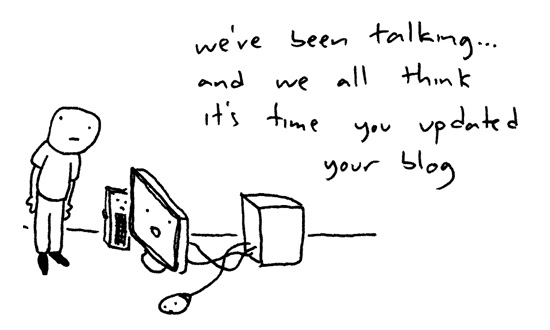Lüders, M. (2008). Conceptualizing personal media.
We have learnt that new media communication technologies enable and facilitate user-to-user interactivity and interactivity between user and information. Internet, the network of networks that consists of millions of private, public, academic, business, and government networks, of local to global scope, connects billions of users worldwide and replaces the "one-to-many" model of traditional mass communication with the possibility of a "many-to-many" web of communication, where any individual with the appropriate technology can produce his or her online media.
The new media with technology convergence shifts the model of mass communication, and radically shapes the ways we interact and communicate with one another. The article by Marika Lüders describes how the digitalization and personal use of media technologies have destabilized the traditional dichotomization between mass communication and interpersonal communication, and therefore between mass media and personal media (e.g. mobile phones, email, instant messenger, blogs and photo-sharing services). It also aims to point out some social implications of the recent and ongoing development of digital personal media.
The rise of new media has increased communication between people all over the world and the Internet. With the development and appropriation of digital personal media, mediated social interaction has the potential to be near all-pervasive in our everyday life. It has allowed people to express themselves through blogs, websites, pictures, and other user-generated media. Lüders writes: "The combination of the Internet, PC and evolvement of less expensive and more manageable media production tools give leeway for the amateur media producer. Anyone becomes qualified to be a media producer and is likely to have an audience to their productions. Examples are ample. The successes of photo-sharing services such as Flickr and Deviantart are only two cases that consolidate the thesis of the amateur media producer." This means that individuals now have a means to exposure that is comparable in scale to that previously restricted to a select group of mass media producers. Individual users increasingly construct media messages, social discourses multiply and mass media institutions no longer reign as exclusive storytellers with audiences beyond immediate social and geographical borders.
At the same time, the importance of active and creative amateur users is stressed among key actors within the mass media industry, further complicating the distinction between personal media and mass media. In August 2006, CNN launched CNN Exchange (now CNN iReport), a service referred to as YouTube for news – you can submit your own newsworthy videos, audio clips and articles and perhaps see them on the site and TV. The problem, of course, is that CNN controls the whole experience. On the other hand, there are weblogs that, in recent years, have gained increasing notice and coverage for their role in breaking, shaping, and spinning news stories. Blogs often become more than a way to just communicate; they become a way to reflect on life, or works of art. Blogs have become the primary Internet medium for individual professional and non-professional self-expression. Few personal blogs rise to fame and the mainstream, but some personal blogs quickly garner an extensive following. Many bloggers, particularly those engaged in participatory journalism, differentiate themselves from the mainstream media, while others are members of that media working through a different channel. Some institutions see blogging as a means of "getting around the filter" and pushing messages directly to the public.
Therefore, as explained by Lüders, with the digitalization of media, in certain cases the same media technologies are used for both mass media and private individual purposes. For example, the Internet is the technological foundation of both commercial online magazines and personal homepages. Sharing the technologies, however, does not mean that distinctions between mass media and personal media are no longer pertinent. Personal media are distinguishable from mass media, if not always technically, then at least socially. Technologies in practice take on different meanings in different contexts. Technologies are more than their technical elements and media forms are more than their technology. Media forms are the result of the interrelations between media technologies and their function within our everyday lives. The Internet as technology constitutes various media forms, which then are characterized further by different genres. Blogs clearly fall into various genres: personal diaries, academic, research, travel, campaigning or food, among many others.
All this makes personally-mediated messages and user-generated content rather chaotic, compared to traditional mass media, and requires people to be multimodal-literate: handling a complex mix of audiovisual-textual media technologies, producing and deciphering meanings. Yet the advantages that the new kind of media has enabled for us as media producers and consumers are preponderate. Vin Crosbie, media industry consultant and professor of New Media at Syracuse University, describes in "What is New Media?" the new media as individuation media that has the advantages of both the interpersonal and the mass media, but without their complementary disadvantages.
No longer must anyone who wants to individually communicate a unique message to each recipient have to be restricted to communicating with only one person at a time. No longer must anyone who wants at once to communicate message to a mass of people be unable to individualize totally the content of that message for each recipient.As for the Lüders' article, the conclusion remained unclear to me. Does she consider the blurring borders between mass communication and interpersonal communication a problem or does she simply acknowledge the fact that it is happening – or has already happened? In one way or another, I tend to think that the mix is a benefit to both sides and both the interpersonal and the mass media can complement one another as seen in the arising new media.

No comments:
Post a Comment